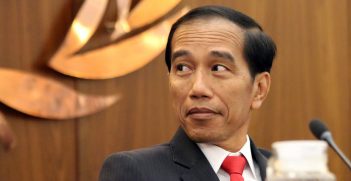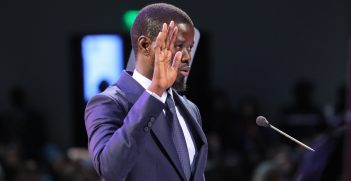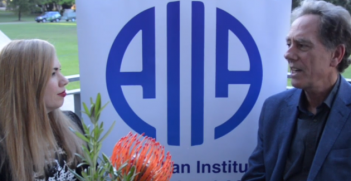Myanmar’s Tortuous Democratisation

The vision of democracy in Myanmar remains strong but the closer it gets, the more confusing it becomes. Amid ongoing ethnic tension, including in Rakhine State.
When viewed from a distance, the Shan Plateau in eastern Myanmar appears to be one entity on the horizon. Yet when one drives up the edge of the plateau it reveals itself as far more complex: a vast area with multiple lines of valleys and peaks that were not visible when it was simply a stripe on the horizon.
When I first moved to Myanmar in the early 2000s, democracy was a distant prospect. The military government was entrenched and many activists and leaders of the opposition movement—including Nobel laureate Daw Aung San Suu Kyi herself—were political prisoners. During this time, Western governments, Burmese activists and opposition leaders, human rights organisations and the Burmese diaspora around the world were broadly united in a future vision of a democratic Myanmar. Democracy was a distant prospect, yet played a role as a single vision around which diverse international and local groups could mobilise.
In the last five years, progress toward democracy has moved faster in Myanmar than many observers would have thought possible. In a country where citizens could previously have been arrested for offering any kind of complaint about the former military regime or for having unregistered gatherings of more than a handful of people, new freedoms of speech and association have emerged. And in 2015, citizens voted in the nation’s first credible general elections in decades.
Not only were Myanmar citizens able to vote, but the decades-long struggles of the democracy movement ended as Daw Aung San Suu Kyi’s National League for Democracy (NLD) celebrated a landslide election victory. If the brutal military regime of the 1990s and 2000s under Senior General Than Shwe is the benchmark, then many Burmese would now say their country is more democratic.
Yet as democracy has moved from being a distant vision on the horizon to an everyday reality, its complexity has become more apparent. The basic premise that democracy was preferable to military authoritarianism had knitted together many alliances and partnerships amongst Burmese democratic activists and their international allies. Yet now the vision of democracy has become a point of sharp contest and some developments in the country are worse than anyone could have imagined during the NLD victory parades of 2015.
Most obviously, racism and violence against Muslims in Myanmar, which had been surfacing publicly over the last five years, reached a crescendo in 2017 in Rakhine State in the country’s west. Over 700,000 Muslims, most of whom identify as Rohingya, fled across the Bangladesh border as the Burmese police and military brutally responded to a terrorist attack by the Arakan Rohingya Salvation Army. Investigations are yet to reveal the extent of operations against citizens in Rakhine, although Amnesty International has labelled the military’s actions as ‘crimes against humanity’ and others use the word ‘genocide’.
Such brutal actions by the military are not, however, isolated only to Rakhine state. In the north and east of the country, the Tatmadaw (Myanmar armed forces) continues to fight against ethnic minority armed groups. Myanmar’s peace process has not accelerated since the victory of the NLD in 2015 and may in fact have slowed. While there is broad agreement about the need for a federal democracy in Myanmar, active conflict continues. There seems little hope in the short term that a peace agreement, or even a national ceasefire agreement, will emerge.
Amidst these ongoing actions of the military, Western governments and human rights organisations have been shocked by the muted response from many Burmese democratic leaders and activists. In many Western embassies and human rights organisations, support for Daw Aung San Suu Kyi or for Burmese democratic leaders and activists more broadly was premised on the assumption that these Burmese allies were promoting liberal democratic institutions and the values of pluralism, rights and protection for minorities.
It has become clear however, that this liberal democratic vision was not always a shared one.
Daw Aung San Suu Kyi and the country’s new leaders, along with many activist groups, are undoubtedly committed to democracy, but that vision of democracy seems to diverge from the vision assumed by Western governments and human rights groups. My research has revealed alternative Burmese visions of democracy and freedom rooted in values of unity, responsibility and discipline, and with only a limited tolerance for diverse identities. Muslim identities in particular are perceived by some Burmese political leaders to be a threat to the stability of the country. There are also profound contests between Burmese democracy leaders and activists themselves about the nature of democracy, and the role of these values of unity, responsibility and discipline.
Underlying current political contests in Myanmar, whether over the peace process or violence against Muslims, are diverging visions of what a democratic Myanmar ought to look like. For Western donor representatives, there are powerful expectations of liberal institutions and values. Yet for the country’s NLD leaders, these values are often weighed against a different set of democratic criteria and a different set of concerns, especially around the unity of the county. Meanwhile, amongst ethnic or religious minority groups and activists, there are multiple diverging expectations about what democracy in Myanmar should mean.
Rather than one distant stripe on the horizon, democracy in Myanmar has become a maze of multiple visions. The word that once bound together the interests of international human rights actors, local democratic leaders and activists has now lost its singular appeal. The vision of democracy is nearer; yet the nearer it gets, the more confusing it becomes.
Tamas Wells is a Research Fellow in the The Policy Lab at the University of Melbourne. He previously worked as a development adviser and consultant with various NGOs including Save the Children and Oxfam, including seven years living and working in Myanmar.
This article is published under a Creative Commons Licence and may be republished with attribution.





